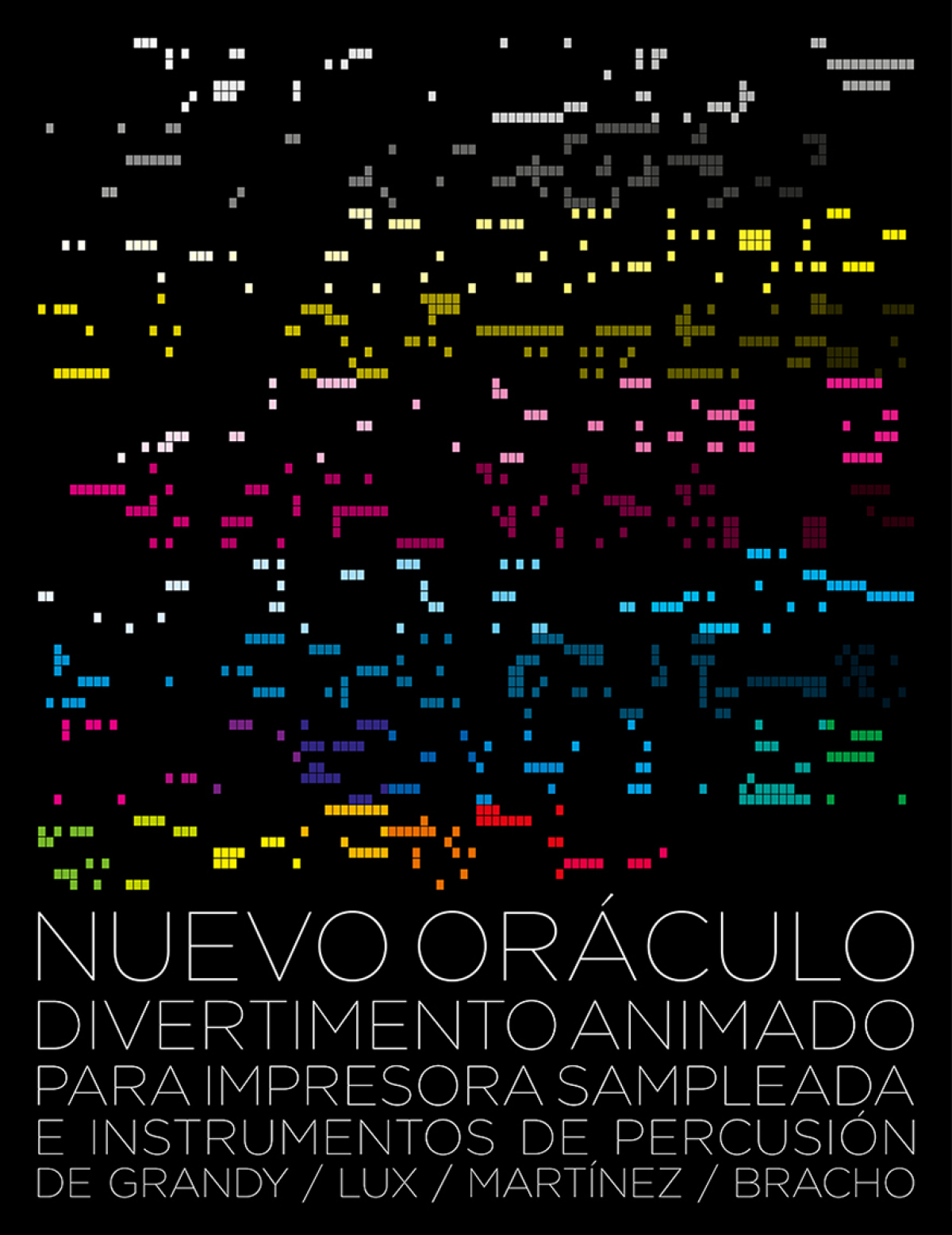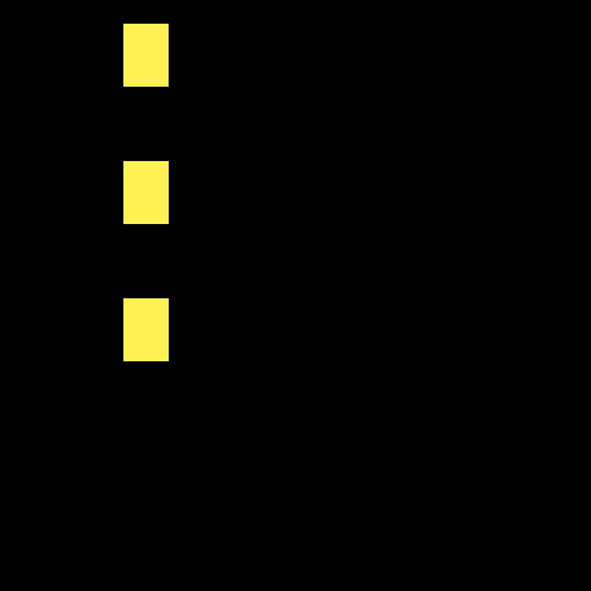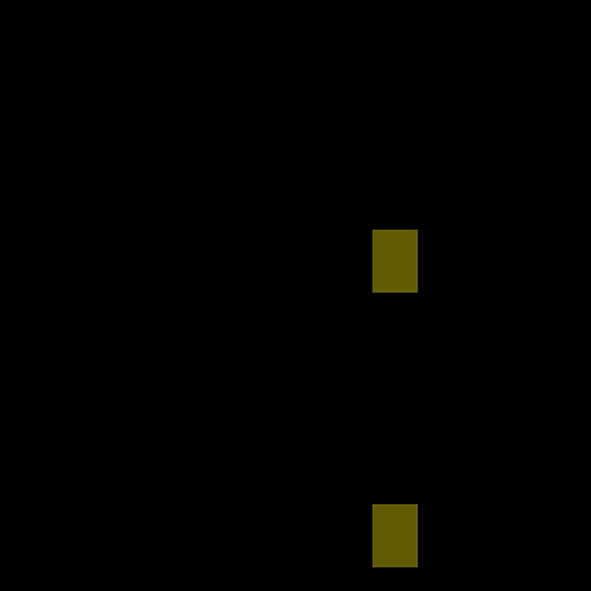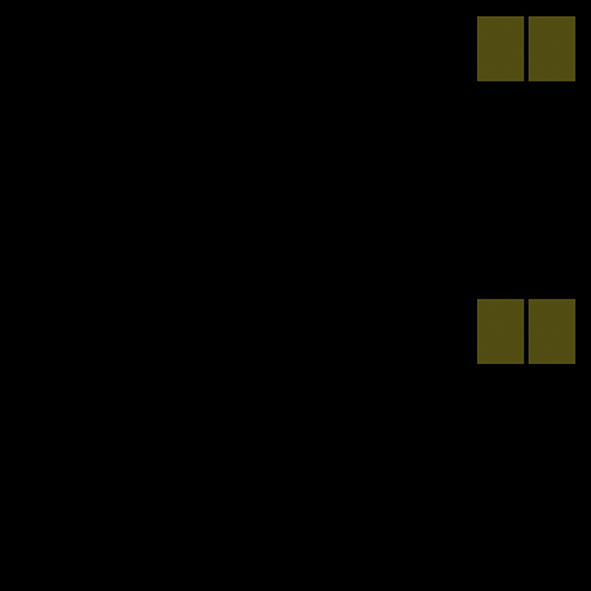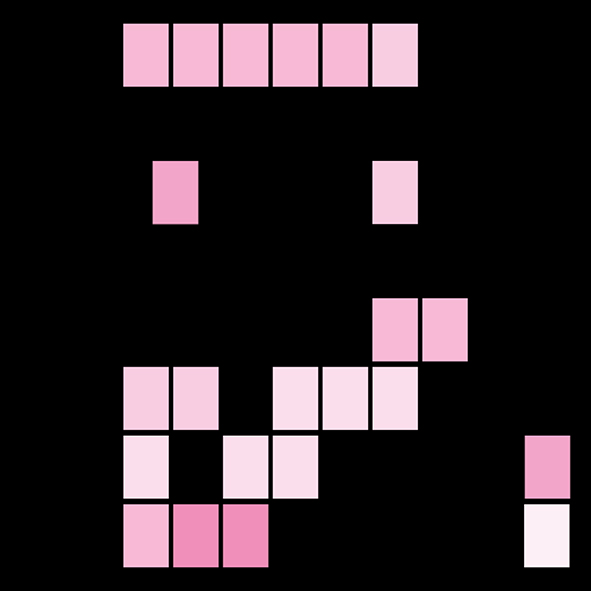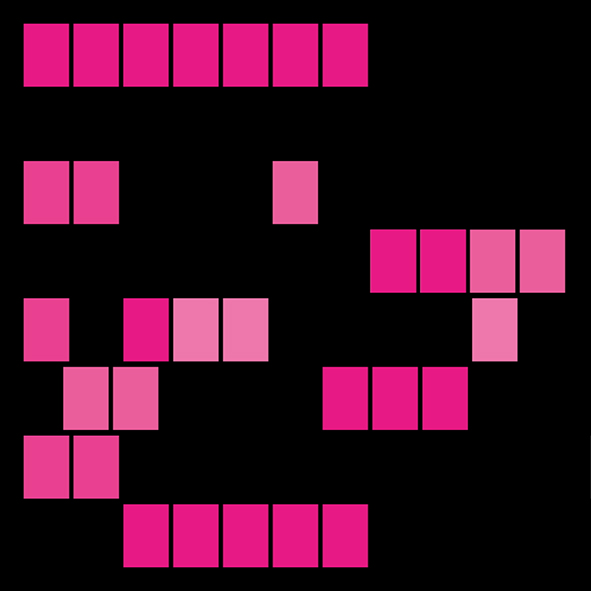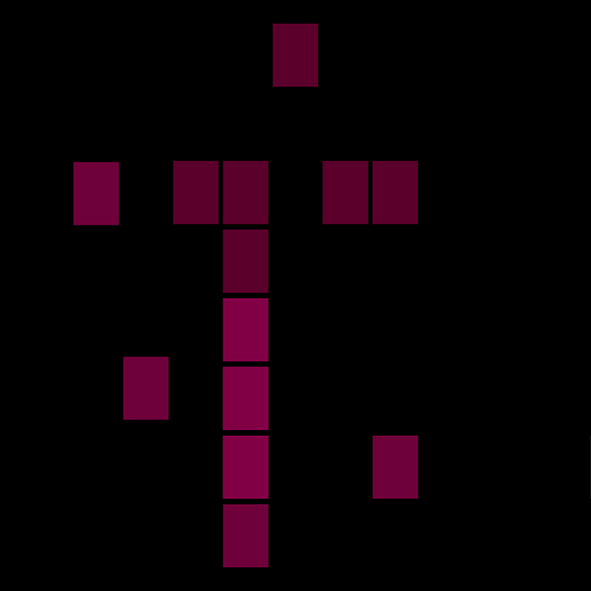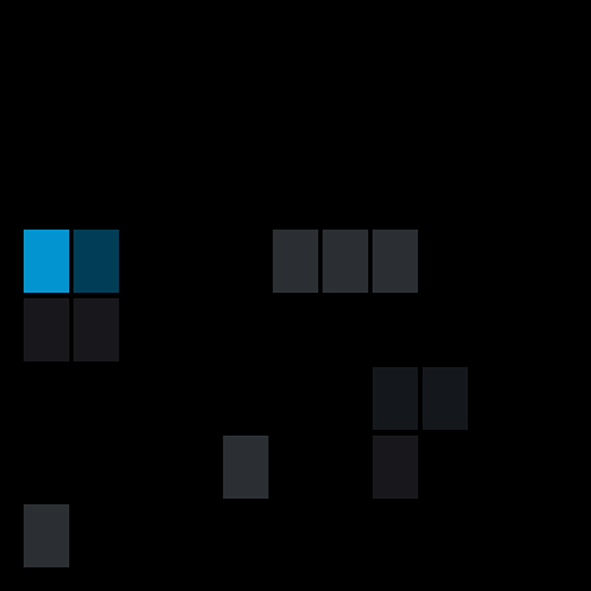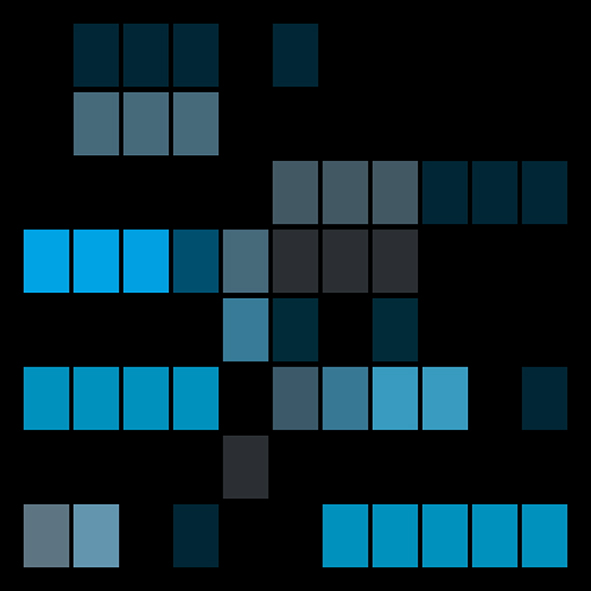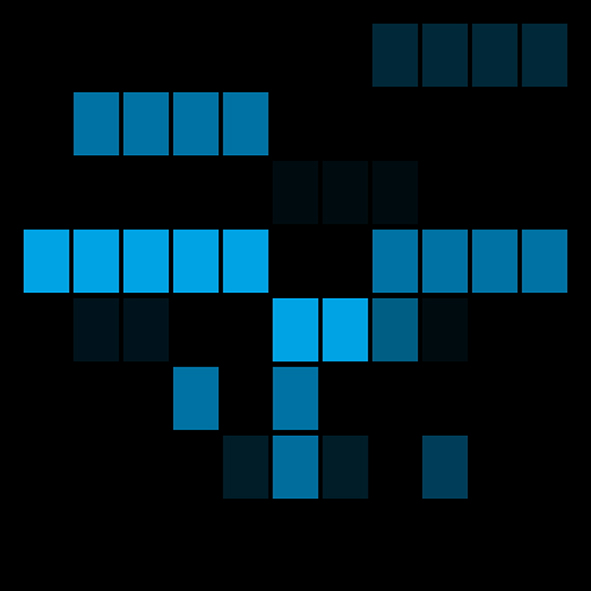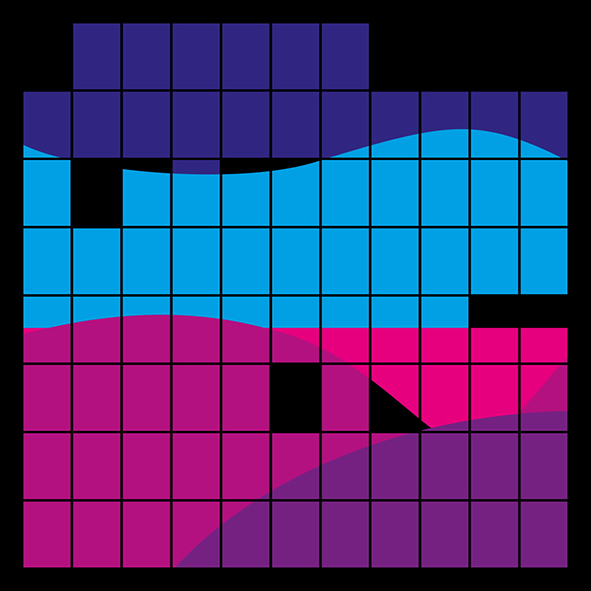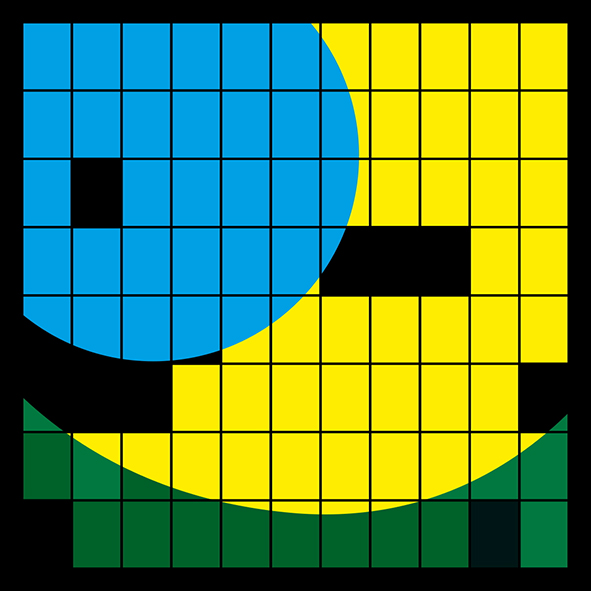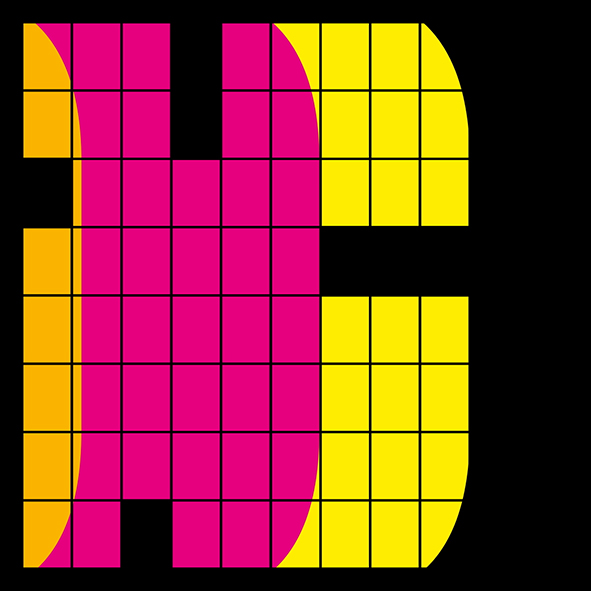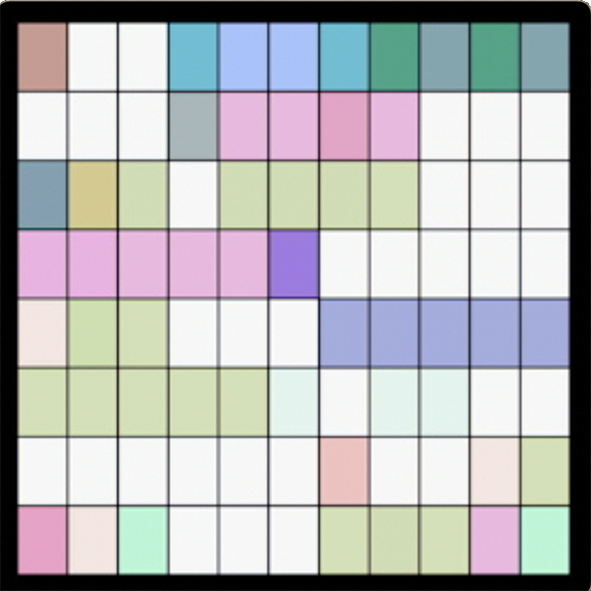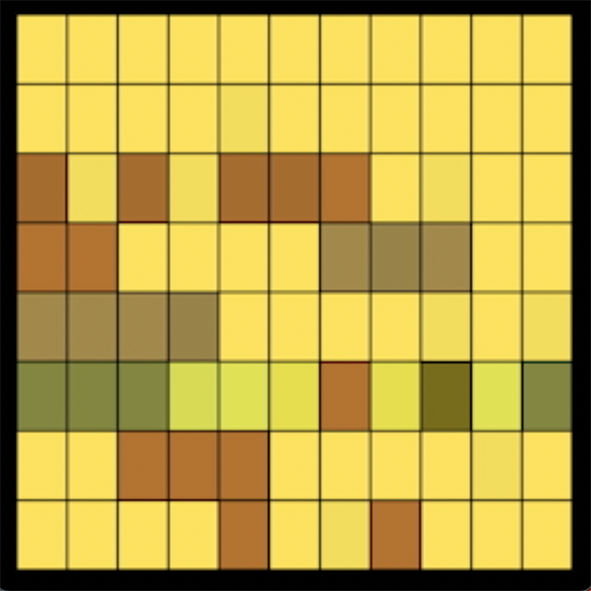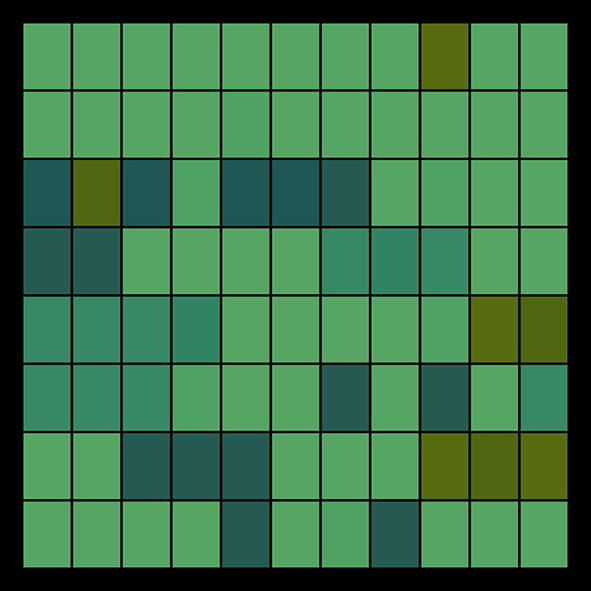Nuevo Oráculo. Divertimento animado para impresora sampleada e intrumentos de percusión. Modulo de Led de 50 x 50 cm. 15′ 53». 2023.
Las ideas, al igual que las imágenes mutan, incluso con el simple hecho de verbalizarlas, mirarlas, volver a pensar en ellas o dibujarlas en un papel. Pero, es al materializarlas, al llevarlas a la práctica, cuando estoy especialmente atento a qué acontece. Observo y reflexiono sobre cómo se transforman esas ideas, como esas imágenes cobran forma y surgen nuevas narraciones paralelas o divergentes por el camino; semillas que recolecta y hago brotar con tanta paciencia como determinación, por muy dilatado que sea su tiempo de germinación.
Durante más de una década he ido encadenando diferentes lecturas estéticas y conceptuales a partir de observar atentamente mi propio proceso de trabajo, y los errores de mi impresora casera. Nuevo Oráculo es el último capítulo hasta la fecha de este viaje por el color y el paisaje desde la abstracción más radical, una materia y un tema que han recorrido intermitentemente la historia de la pintura.
Lo quiero todo, Pedro, Otra vida futura I/II, Oráculo y La mano amiga -proyectos todos ellos surgidos del error- se vuelven a fusionar en Nuevo Oráculo, una pieza musical compuesta en colaboración con María de Grandy, Lux (Jaime Martín) y Sofía Martínez. Nuevo Oráculo es un Divertimento animado para impresora sampleada e instrumentos de percusión dividido en cinco movimientos, cada uno de ellos dedicados a un color y a un instrumento. Así el negro/impresora, el amarillo/Gloplenskiel, el magenta/marimba el cyan/campanas tubulares y el círculo crómático/fantasía instrumental se acompañan de una videoanimación donde los miles de errores de los cien monocromos multipáginas recogidos en el libro Oráculo, y que han servido como partitura visual para Nuevo Oráculo, se transforman en impulsos lumínicos recorriendo todo el espectro de la luz.
Todas las obras que condensa Nuevo Oráculo son, en definitiva, una intensa oda al azar y el error en clave sintética y codificada, a la vez que una apuesta desinhibida por la belleza, intensamente emocional, sensual y evocadora. En su conjunto suponen un viaje de ida y vuelta -con toda la pérdida y la ganancia que ello conlleva- de lo manual a lo mecánico, de lo analógico a lo digital, del pigmento a la luz, y de lo abstracto a lo concreto. Una profunda reflexión sobre el color -y él no color- a través de la construcción de paisajes mentales, visuales, sonoros y literarios.
Nuevo Oráculo. Animated divertimento for sampled printer and percussion instruments. Led module of 50 x 50 cm. 15′ 53». 2023
Ideas, like images, mutate, even with the simple act of verbalizing them, looking at them, thinking about them again or drawing them on paper. But it is when I materialize them, when I put them into practice, that I am especially attentive to what happens. I observe and reflect on how these ideas are transformed, how these images take shape and how new parallel or divergent narratives emerge along the way; seeds that I collect and sprout with as much patience as determination, however long their germination time may be.
For more than a decade I have been stringing together different aesthetic and conceptual readings from carefully observing my own work process, and the mistakes of my home printer. New Oracle is the last chapter to date of this journey through color and landscape from the most radical abstraction, a matter and a theme that have intermittently traveled through the history of painting.
Lo quiero todo, Pedro, Otra vida futura I/II, Oráculo and La mano amiga -all of them projects born out of error- merge again in Nuevo Oráculo, a musical piece composed in collaboration with María de Grandy, Lux (Jaime Martín) and Sofía Martínez. Nuevo Oráculo is an animated Divertimento for sampled printer and percussion instruments divided into five movements, each one dedicated to a color and an instrument. Thus the black/printer, the yellow/Gloplenskiel, the magenta/marimba, the cyan/tubular bells and the chromatic circle/instrumental fantasy are accompanied by a video animation where the thousands of errors of the hundred multipage monochromes collected in the book Oracle, which have served as a visual score for Nuevo Oráculo, are transformed into light impulses running through the entire spectrum of light.
All the works condensed in Nuevo Oráculo are, in short, an intense ode to chance and error in a synthetic and codified key, as well as an uninhibited bet on beauty, intensely emotional, sensual and evocative. As a whole, they represent a round trip -with all the loss and gain that this entails- from the manual to the mechanical, from the analogical to the digital, from pigment to light, and from the abstract to the concrete. A profound reflection on color -and non-color- through the construction of mental, visual, sonorous and literary landscapes.
